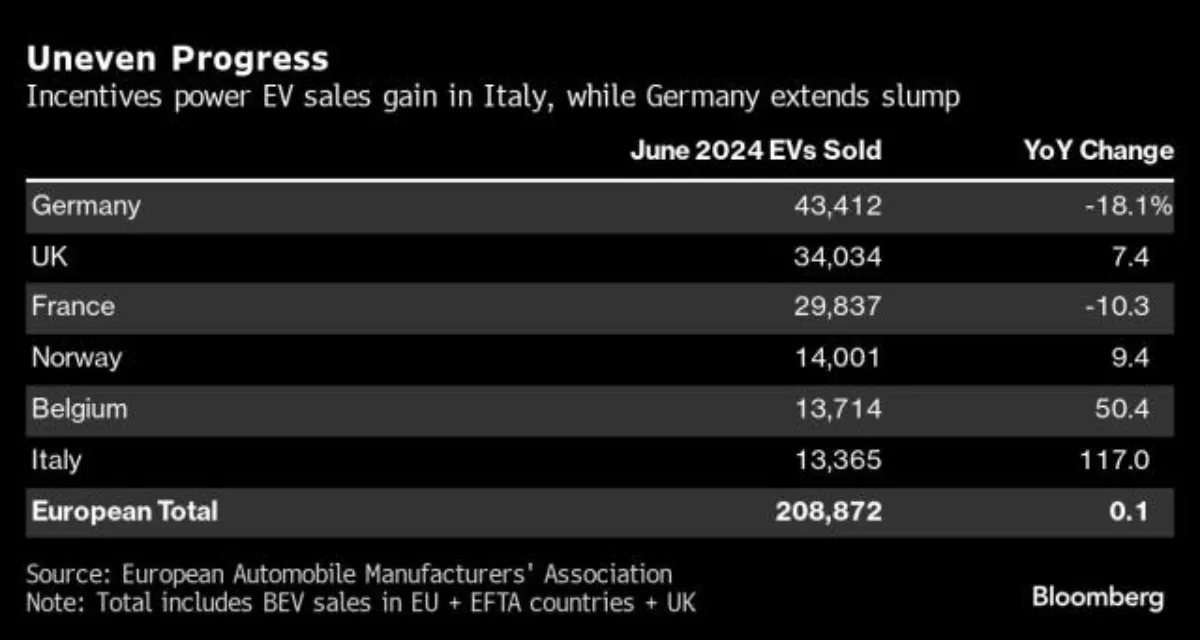

China’s dream of ruling Europe has finally come true. How does it matter if it is through an Electric Vehicle lead? Reportedly, Chinese electric vehicles (EVs) have achieved a significant milestone in the European market by capturing an unprecedented 11% share of the European EV market in June 2024. This surge in market presence comes just before new European Union (EU) tariffs on imported EVs took effect in early July.
In June 2024, over 23,000 Chinese electric vehicles were registered across Europe, marking the highest monthly registrations ever for these brands. This represents a 72% increase from May, which is twice the growth rate of the overall European EV market for that period. The primary driver behind this surge was the anticipation of new EU tariffs on imported EVs, prompting manufacturers and dealers to register vehicles before the tariffs were enforced.
SAIC Motor Corp, a state-owned Chinese automaker, led this push with its MG4 hatchback. A significant number of these vehicles were registered by dealers themselves, reflecting strategic moves to circumvent the impending tariffs. These registrations allowed dealers to sell the cars to customers without the additional duties that came into effect after July 5.
BYD, the world's largest plug-in vehicle manufacturer, also made substantial gains. A focused marketing campaign around the Euro 2024 football tournament held in Germany helped boost consumer interest and sales.
The new EU tariffs significantly impact the cost of importing Chinese EVs. SAIC Motor Corp faces a 38% additional fee on top of the existing 10% customs duty, while BYD's additional fee is 17%. These increased costs pose challenges for maintaining the rapid growth observed in June.
In response to the tariffs, manufacturers on both sides are taking strategic steps. European and Chinese automakers are accelerating plans to establish local manufacturing capabilities within Europe. This move aims to avoid the new tariffs and ensure a steady supply of affordable EVs to the European market.
Another notable factor contributing to the surge in EV sales in Europe was the introduction of new incentives in Italy. The Italian government offered €200 million in subsidies for EV purchases, which were quickly exhausted in less than nine hours. This incentive program led to a doubling of battery-electric vehicle sales in Italy compared to the previous year, propelling Italy into the top six markets for EVs in Europe.
European policymakers are navigating a delicate balance between promoting the adoption of affordable Chinese-made EVs to meet sustainability goals and protecting the domestic automotive industry. The economic landscape in Europe, particularly in countries like Germany, where economic growth is slow, influences consumer affordability of higher-cost European-made EVs.
Amidst these developments, trade relations between Europe and China remain complex. Italian Prime Minister Giorgia Meloni is making efforts to strengthen ties with China, reflecting the strategic importance of maintaining good relations for economic and trade benefits. Additionally, collaborations between European and Chinese automakers are becoming more prominent. Stellantis, for example, has entered a joint venture with Zhejiang Leapmotor Technology Co. to produce EVs in Europe, demonstrating the trend toward deeper integration of Chinese manufacturing capabilities into the European market.
The record market share achieved by Chinese EVs in Europe underscores the dynamic and rapidly evolving nature of the automotive industry. The surge in registrations ahead of new tariffs highlights the strategic maneuvers by manufacturers to maintain market competitiveness. As the EU's new tariffs take effect, the sustainability of this growth will be closely monitored, and the industry will continue to adapt through increased local production and strategic partnerships.
In summary, the rise of Chinese EVs in Europe represents a significant shift in the automotive landscape, driven by strategic foresight and rapid market adaptation. The coming months will reveal the long-term impact of these changes as the market adjusts to new economic and regulatory realities.
Also Read: